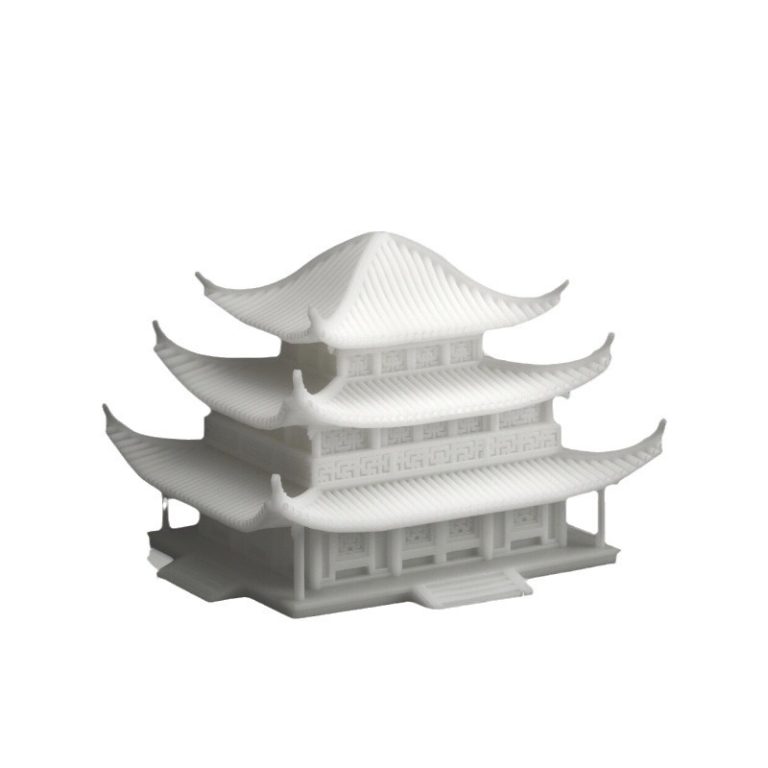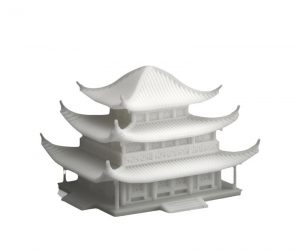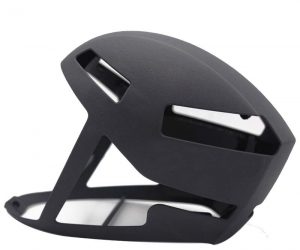The advent of steel in the 3D printing domain has catalyzed a transformative shift in manufacturing, expanding the horizons of design potential, functionality, and personalization. By harnessing the distinctive properties of steel, this pioneering technology has unlocked a multitude of opportunities across diverse sectors—from crafting specialized components for construction to engineering cutting-edge parts for aerospace and automotive applications. As the technology matures, propelled by relentless innovation and escalating market integration, the prospects for steel 3D printing are exceptionally promising. This evolution is redefining our conceptualization of manufacturing, steering us toward a future characterized by enhanced sustainability, operational efficiency, and groundbreaking advancements.
I. Introduction to 3D Printing with Steel
A. Evolution of Metal Impresión 3D
The manufacturing landscape is undergoing a significant metamorphosis, propelled by the extraordinary innovations characterizing 3D printing technology. Within the expansive domain of metal 3D printing, the adoption of steel stands out as a revolutionary advancement, presenting a distinctive amalgamation of characteristics that are reshaping the paradigm of design and production methodologies.
B. Distinctive Qualities of Steel in 3D Printing
Steel, an inherently robust and versatile metal alloy, has been a fundamental material across diverse industries, encompassing construction, automotive engineering, and beyond. Its remarkable attributes—strength, durability, and resistance to corrosion—render it an optimal selection for an extensive array of applications. The incorporation of steel within the 3D printing framework has heralded a new epoch in manufacturing, facilitating the genesis of intricate, high-performance components that were previously inconceivable through conventional fabrication techniques.
II. Methodologies for 3D Printing with Steel
A. Laser Beam Melting (LBM)
Among the cutting-edge technologies deployed in steel 3D printing, Laser Beam Melting (LBM), also referred to as Selective Laser Melting (SLM), commands attention due to its efficacy in producing steel components. This method involves the strategic melting of thin layers of metal powder via an intensive laser beam, thus allowing for the meticulous and controlled assembly of intricate geometries. LBM is renowned for its capacity to yield steel components with superior quality, exceptional surface finishes, and enhanced mechanical properties, thereby establishing itself as a preferred technology for a diverse array of industrial and commercial applications.
B. Electron Beam Melting (EBM)
Electron Beam Melting (EBM) presents another pivotal technology in the realm of steel 3D printing. This sophisticated process harnesses a high-energy electron beam to selectively melt and amalgamate metal powders, resulting in the fabrication of desired components. EBM is distinguished by its elevated level of design freedom, enabling the realization of intricate shapes and features that are challenging or impractical to replicate through traditional manufacturing methodologies. This technique is especially advantageous for the creation of steel parts, as it facilitates the production of components of remarkable density and durability.
C. Direct Energy Deposition (DED)
Direct Energy Deposition (DED) encapsulates a 3D printing methodology that utilizes a concentrated energy source—be it a laser or an electron beam—to melt and layer metal materials in a precise manner. Particularly adept for the creation of steel components, DED permits the direct deposition of molten metal onto a substrate, facilitating the fabrication of large-scale parts as well as the refurbishment of extant structures. This innovative technique boasts unique benefits, such as compatibility with various steel alloys and the potential for on-site near-net-shape manufacturing, thereby enhancing production efficiency.
III. Sectors Benefiting from Steel 3D Printing
A. Construction and Architectural Innovation
The unparalleled durability and precision offered by steel 3D printing have positioned it as a transformative force within the construction and architectural domains. This technology enables the production of complex, bespoke structural elements, architectural embellishments, and even entire building components. Such an innovative approach not only facilitates the execution of ambitious design visions but also significantly minimizes material waste and streamlines construction processes.
B. Advancements in Automotive and Motorsports
The automotive and motorsports industries have emerged as pioneers in the adoption of steel 3D printing, capitalizing on its potential to manufacture high-performance, specialized parts. From custom-engineered engine components and lightweight chassis structures to sophisticated body panels and racing accessories, the design freedom afforded by 3D printed steel enhances performance while accelerating the prototyping and iterative design process, holding promise for significant advancements in vehicle performance.
C. Aerospace and Defense Applications
The aerospace and defense sectors are leading the charge in harnessing the capabilities of steel 3D printing. This technology is employed to fabricate mission-critical components characterized by remarkable strength, durability, and precision. Its applications range from the production of aircraft parts and satellite components to the creation of specialized military gear and armored vehicles, fundamentally revolutionizing manufacturing practices and supply chain efficiencies within these high-stakes industries.
D. Industrial Tooling y Mold Fabrication
The adaptability and precision intrinsic to steel 3D printing have found substantial utility within industrial tooling and mold fabrication. The capacity to manufacture customized, complex molds and tools with steel has revolutionized operational processes across various sectors, enabling the production of high-quality components, significantly reducing lead times, and elevating overall manufacturing efficiency.
Through its remarkable capabilities, 3D printing with steel is not merely enhancing traditional manufacturing processes; it is redefining them, paving the way for unprecedented possibilities and innovations across diverse industries.
IV. Advantages of Using Steel in 3D Printing
A. Enhanced Performance and Precision
Steel’s exceptional attributes—predominantly manifesting as a formidable strength-to-weight ratio, impressive wear and corrosion resistance, and remarkable thermal stability—position it as an optimal choice for 3D printing applications. Components fabricated from steel via additive manufacturing not only display superior mechanical performance but also achieve remarkable dimensional accuracy and surface quality. These enhancements facilitate the production of highly reliable and durable parts capable of performing in extremely demanding operational environments where standard materials might falter.
B. Significant Cost Efficiencies and Time Savings
Beyond its performance metrics, the implementation of steel in 3D printing technologies yields substantial economic and temporal advantages when juxtaposed with conventional manufacturing paradigms. This innovative approach eliminates the necessity for intricate tooling, extensive molds, and labor-intensive processes, thereby refining the overall production workflow. As a result, lead times are considerably abbreviated and overall manufacturing costs are diminished. Coupled with the capabilities for rapid prototyping and small-batch production, steel 3D printing presents a compelling solution for industries requiring immediate and customizable manufacturing solutions.
C. Design Versatility and Customization Potential
The infusion of steel into 3D printing methodologies effectively transcends the limitations imposed by traditional manufacturing techniques, thus unlocking a vast array of design possibilities. This technology’s capacity to produce complex, bespoke geometries that were once deemed unattainable equips engineers, architects, and designers with the tools necessary to challenge conventional design paradigms. The resulting components not only are high-performance but also aesthetically astonishing, fostering innovation across various sectors.
V. Addressing Challenges in Steel 3D Printing
A. Material and Process Optimization
Despite the manifold advantages associated with steel 3D printing, challenges persist that warrant meticulous attention to ensure the sustained fabrication of top-tier components. The formulation of optimal 3D printing procedures—encompassing the judicious selection of steel powders and meticulously calibrated printing parameters—is imperative to attain the desired mechanical attributes, surface perfection, and dimensional fidelity. Continuous research and advancements in materials science remain pivotal in elevating the properties of steel, accelerating printing speeds, and refining the manufacturing continuum.
B. Post-Processing and Surface Treatment
The inherent nature of the 3D printing process can necessitate subsequent post-processing and surface enhancement of steel components. Employing techniques such as heat treatment, precision machining, and diversifying surface treatments becomes essential for refining the final properties and improving both dimensional accuracy and visual appeal. Mastery of these post-processing techniques is crucial for guaranteeing the performance reliability and longevity of steel 3D printed parts, particularly in advanced applications where precision is paramount.
C. Qualification and Standardization
As the integration of steel 3D printing amplifies across sectors, the establishment of rigorous qualification and standardization frameworks gains critical importance. Developing comprehensive industry standards, certification protocols, and stringent quality control procedures is essential for fostering trust in the application of 3D printed steel components, particularly in high-stakes operations. The cooperation among manufacturers, regulatory institutions, and industry organizations will be instrumental in addressing these challenges, thus facilitating the broader acceptance of steel 3D printing.
VI. Industrial Case Studies
A. Pioneering Projects and Avant-Garde Applications
The advent of steel 3D printing has been catalyzed by the innovative endeavors of diverse companies, academic institutions, and industrial frontrunners. From the evolution of sophisticated printing technologies to the advent of groundbreaking applications, case studies elucidate the transformative capabilities of steel 3D printing across an array of sectors. These compelling narratives serve to offer profound insights into practical applications, demonstrating the tangible impacts of this technology in real-world scenarios.
B. Exemplary Success from Leading Industries
The embrace of steel 3D printing is especially pronounced in sectors characterized by an incessant demand for high-performance, customized, and efficient manufacturing solutions. Notable instances abound, including the production of specialized automotive components, the crafting of intricate aerospace entities, and the conceptualization of distinctive architectural installations. These case studies underscore how pioneering organizations have adeptly leveraged the advantages of steel 3D printing to sharpen their competitive edge, optimize their operational efficiencies, and redefine the potentialities within their respective domains.
C. Contributions to Sustainability and Production Ecosystems
The intrinsic advantages of steel 3D printing—notably its potential to curtail material waste, facilitate on-demand production, and promote localized manufacturing—have substantially bolstered its role in enhancing sustainability and reshaping production ecosystems. By mitigating the environmental impact associated with traditional manufacturing methods and fostering the principles of a circular economy, steel 3D printing is emergently positioned as a pivotal contributor to a more sustainable and resilient future across diverse industries.
VII. The Future Landscape of Steel 3D Printing
A. Emerging Technological Developments
As we gaze into the horizon of steel 3D printing, the trajectory indicates a realm of unprecedented innovation and technological flourishing. Intense research and development initiatives are actively focused on elevating printing velocities, refining the mechanical and physical properties of materials, and broadening the palette of steel alloys suitable for additive manufacturing processes. These advancements promise to empower the fabrication of increasingly intricate, resilient, and high-performance steel components. Such a transformation not only stands to revolutionize established manufacturing paradigms but also challenges the conventional limits of engineering design and material utilization.
B. Potential Market Expansion and Industry Disruption
Forecasts indicate that the global landscape for steel 3D printing is on the brink of a robust expansion, largely fueled by an intensifying appetite for tailored, high-caliber components. This surge is coupled with a pressing necessity for bolstered supply chain resilience, as well as a burgeoning recognition of the profound transformative capabilities inherent in this cutting-edge technology. As various sectors acknowledge and embrace the manifold advantages of steel 3D printing—from expedited prototyping to reduced waste—its adoption is set to accelerate dramatically. This paradigm shift is likely to herald an unprecedented era in manufacturing, marked by enhanced efficiency, sustainable practices, and an agile responsiveness to the dynamic demands of the marketplace.
C. Ethical and Environmental Considerations
However, with the burgeoning proliferation of steel 3D printing, it becomes increasingly critical to scrutinize the ethical and environmental ramifications associated with this technology. Key considerations include the responsible extraction and procurement of raw materials, the ecological footprint resultant from the manufacturing methodologies, and the potential socio-economic upheavals linked to the automation of production processes. Engaging in proactive dialogue and fostering collaborations among industry leaders, policymakers, and sustainability advocates will be imperative. Such concerted efforts are essential to guide the evolution of steel 3D printing in alignment with overarching objectives that champion a sustainable and equitable future.
Frequently Asked Questions (FAQs)
1. What are the primary advantages of utilizing steel in 3D printing technologies?
The deployment of steel in 3D printing offers a myriad of advantages, pivotal among which are:
- Remarkable Strength and Endurance: Steel is lauded for its unparalleled strength-to-weight ratio, coupled with its robust resistance to wear, corrosion, and extreme thermal conditions. This makes it a supremely suitable material for crafting high-performance, durable components that withstand rigorous operational demands.
- Design Versatility: The innovative nature of steel 3D printing facilitates the generation of complex and intricate geometrical forms that would pose significant challenges or become unfeasible through conventional manufacturing techniques. This opens vast avenues for avant-garde design and engineering solutions.
- Enhanced Performance and Precision: Components produced via steel 3D printing exhibit superior mechanical attributes, exceptional dimensional accuracy, and superior surface finishing. These characteristics ensure reliable and consistent performance, particularly in high-stakes applications requiring meticulous precision.
- Economic Viability and Time Efficiency: Steel 3D printing diminishes the necessity for specialized tooling and effectively shortens production lead times. This streamlining of processes culminates in significant cost reductions and enhanced operational efficiencies throughout the manufacturing lifecycle.
2. What are the predominant 3D printing technologies employed for steel components?
A variety of pioneering 3D printing technologies are harnessed for the fabrication of steel parts, including:
- Laser Beam Melting (LBM): This sophisticated technique deploys a high-energy laser to selectively melt and fuse thin layers of steel powder. The result is a profound capacity for creating elaborate geometries.
- Electron Beam Melting (EBM): Utilizing an electron beam, this method melts and fuses steel powder, producing components that are not just intricate but also exhibit remarkable density and durability.
- Direct Energy Deposition (DED): This innovative process introduces molten steel material directly onto a substrate, offering the ability to manufacture large-scale components and facilitate repairs on existing structures without necessitating a complete overhaul.
3. What are the significant applications of steel 3D printing across various sectors?
Steel 3D printing is making substantial inroads in a diverse array of industries, including but not limited to:
- Construction and Architecture: This technology is revolutionizing the fabrication of customized and high-performance structural elements, architectural flourishes, and integral building components that enhance both aesthetic appeal and functionality.
- Automotive and Motorsports: Within this sector, steel 3D printing is employed to manufacture specialized engine components, lightweight chassis frameworks, and detailed body panels designed for high-performance vehicles that demand exceptional engineering precision.
- Aerospace and Defense: The creation of mission-critical aircraft parts, satellite infrastructure, and bespoke military equipment benefits significantly from the ability to produce robust and reliable components tailored to specific operational requirements.
- Industrial Tooling and Mold Manufacturing: The technology facilitates the production of custom tools, fixtures, and molds that are pivotal to various manufacturing processes, allowing for enhanced adaptability and efficiency in production.
4. What are the prominent challenges and considerations associated with steel 3D printing?
Despite its advantages, steel 3D printing presents several challenges and considerations that must be navigated carefully:
- Material and Process Optimization: Achieving consistent part quality, desired mechanical properties, and dimensional accuracy necessitates meticulous optimization of steel powder characteristics and intricate printing parameters, as even minor deviations can significantly impact performance.
- Post-Processing and Surface Treatment: The requirement for additional post-processing procedures, such as heat treatments, machining, and surface treatments, is essential to enhance the final properties and appearance of steel 3D printed components, potentially adding time and cost to the overall process.
- Qualification and Standardization: Establishing robust qualification protocols and developing industry-wide standards is critical to building trust and confidence in steel 3D printed components—particularly for those employed in mission-critical applications where failure is not an option.
5. What is the forecast for the future of steel 3D printing technology?
The future of steel 3D printing is exceptionally bright and marked by several key developments poised to drive its growth and integration into various industries:
- Ongoing Technological Innovations: Continuous advancements in research and development are focused on enhancing printing speed, broadening material capabilities, and significantly improving the overall performance characteristics of steel 3D printed components.
- Broadened Market Adoption: As industries globally increasingly recognize the transformative benefits of steel 3D printing, this technology stands on the precipice of widespread acceptance, leading to rising production volumes and reduced costs.
- Sustainability and Resilience: The intrinsic advantages associated with steel 3D printing, including minimized material waste and the capacity for localized manufacturing, will play a crucial role in promoting sustainability and fortifying the resilience of production ecosystems.
- Ethical and Environmental Accountability: Addressing the ethical and environmental ramifications of steel 3D printing is paramount. Emphasizing responsible sourcing practices and minimizing ecological footprints will be crucial for the long-term viability and public acceptance of this groundbreaking technology.


